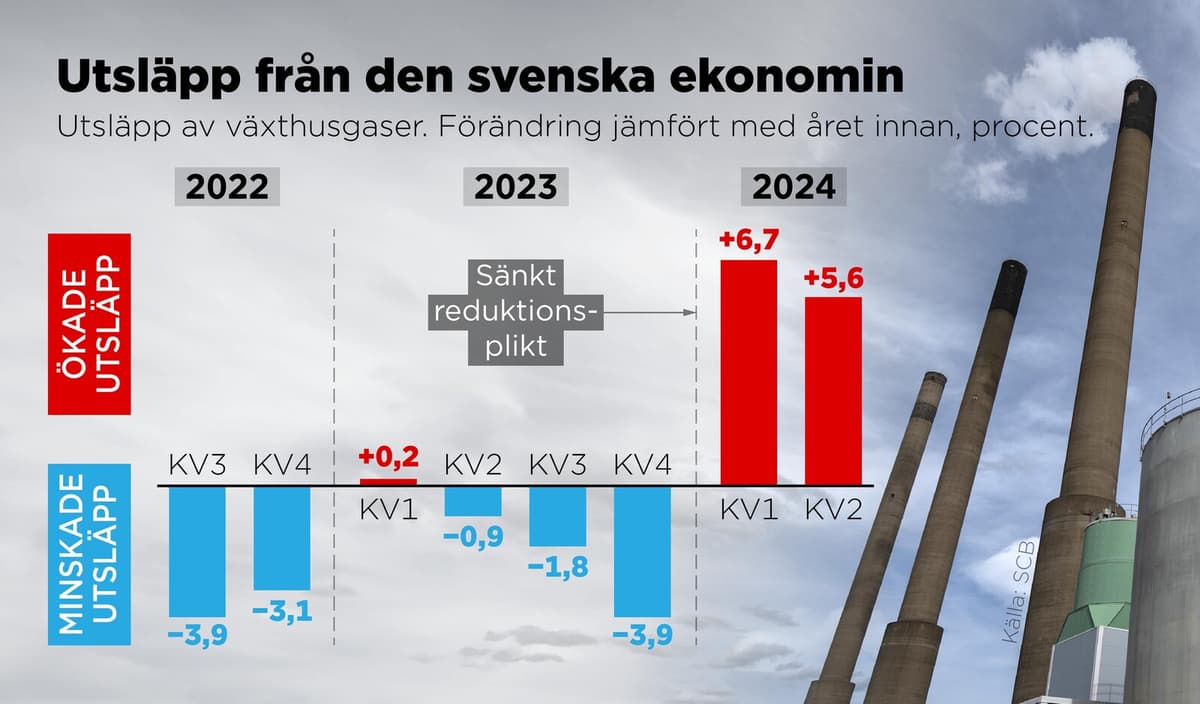The second quarter of 2024 has the highest emissions for a second quarter since 2021. The first quarter of 2024 also stood out with a large increase, according to Johanna Takman, analyst at SCB's environmental accounts.
It can vary a bit between years and quarters, but these two quarters have stuck out in the time series.
SCB notes that what has happened between the two quarters is the reduction obligation, but cannot confirm that it has contributed to the increase.
Most likely explanation
For Mathias Fridahl, expert on climate policy and lecturer at Linköping University, the connection is obvious.
The increase is an effect of the reduced reduction obligation, it is the most likely explanation for the increase in the transport sector.
It will also contribute to making it even harder for Sweden to live up to its commitments to the EU, since transport emissions are so important for our ability to reach our EU goals.
Compared to the second quarter last year, the increase was 5.6 percent. This despite the fact that Swedish GDP (the total production of goods and services) only increased by one percent during the period. Thus, emissions increased by 4.5 percent per unit of production in the Swedish economy.
Construction industry increases the most
Households, the construction industry, and the transport sector account for the largest emission increases. The largest increase was in the construction industry, plus 28 percent, "mainly due to increased use of fossil diesel", writes SCB.
"The emission increases from construction activities, households, and the transport sector can be linked to increased deliveries of fossil diesel, which has been shown by monthly fuel, gas, and inventory statistics", writes SCB.
The reason is that the reduction obligation for blending biofuels in diesel was significantly reduced, from 30.5 percent to 6 percent, at the turn of the year 2023/2024. Next year, the reduction obligation will be increased again, but Mathias Fridahl thinks it is difficult to predict what effects it will have.
Aside from biofuels, public charging stations are also included, so the effect of the new reduction obligation is a bit hard to calculate.






